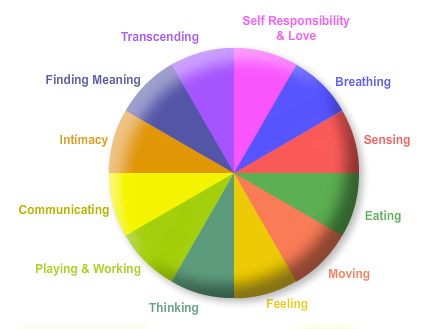Kathryn Stolle - The 12 Dimensions of Wellness
12 Dimensions of wellness - the role that it can and should pay in our lives in having a better and healthy life style.
Wellness for Change is the slogan of Kathryn's company and its about choosing wellness to change your life. Kathryn is a two- times Paul Harris Fellow and was reminded how our organization contributes towards a healthy community. Wellness is an integrated system of 12 dimensions that make up our human needs. Its a daily choice that we make throughout the day to move towards being well. We take energy in and transform it. We then release this energy into the environment. It's how we do this transformation that we results in use experiencing "dis-ease" These choices are what experience throughout the day - every day. Its about being mindful and not constantly living in the past or living the future. Its the integration of mind/body/spirit. Wellness is not the absence of disease but its about what we do, how we do it, and how we interact in society.
Dr. John Tranvis (grandfather of the wellness movement) created the "wellness continuum" which illustrates how you can move towards a high level of wellness even if you are unwell. A physical disability does not prevent someone from creating a spiritual and mental well being that off-sets the physical challenges may have. The continuum includes: 1) Self-responsibility & Love; 2) Breathing; 3) Sensing; 4) Eating; 5)Moving; 6) Feeling; 7) Thinking; 8) Playing & Working; 9) Communicating; 10) Intimacy; 11) Finding Meaning; 12) Transcending. These dimensions can be measured through an assessment tool that can be applied to people to determine whether a person is content with what they are experiencing on these factors and what they would like to change.
Stress contributes to an unwell state and causes a significant increase in risk to a person's health including infections, heart disease, mental disorders, substance abuse and injury. Health Canada has quantified the costs of stress on the health care costs and to the workplace. Economic gains of increased productivity; decreased absenteeism; decreased staff turnover if stree and workplace health is properly managed. This costs the Canadian economy over $33 billion a year. Work/life clashes are costing businesses over $10 billion per year.
Fortunately, this problem is being recognizing this problem. Wellness improvements at the workplace include the physical work environment; social-psycho work environment and work-place/life balance. Working and playing are part of the same dimension and when properly managed provides a healthy environment for employees.
Cheryl Thomas thanked the Speaker and presented an Art Card from the Club and the donation to the Anti Malaria Net project through the Ghana Rotary Clubs.

